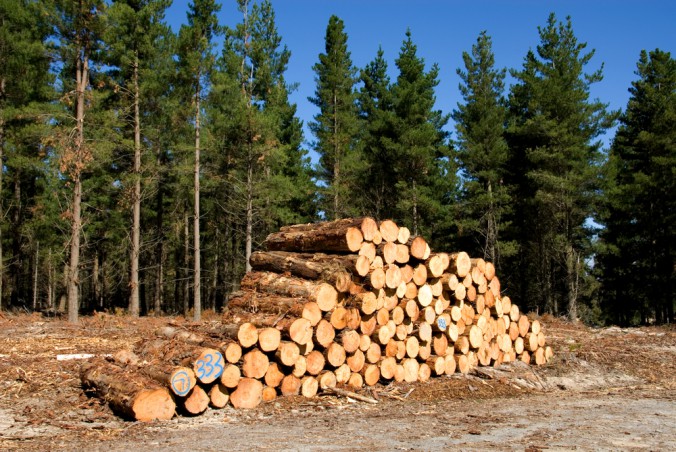Pine plantations began to be established in Australia from the 1870s as insurance against diminishing supplies of timber from native forests. Early attempts to find suitable pine plantation species for Australian conditions gave rise to planting trials using a wide variety of species. Pines from north and central America, Europe and the Mediterranean, from the Himalayas and Eastern Asia were all tried.
While several showed promise, the most successful was Monterey or radiata pine. This species grows naturally only in three small localities on the central Californian coast, in an area of about 5000 hectares, stretching along the Pacific Coast in the Monterey region, south of San Francisco.
In its home state Monterey pine is greatly overshadowed in importance by Douglas fir and ponderosa pine, not to mention the giant redwoods that grow in the locality. In California it had a reputation as a timber tree of limited utility, but was used by pioneering Spanish Franciscan friars to build their mission stations in 1780s and was also used for paving-blocks and for house building in the early gold rush days.
Radiata pine, as it is now more commonly called, is one of the major plantation trees across temperate regions of the Southern Hemisphere and the basis of substantial forest industries in several countries, including Australia, New Zealand, Chile and South Africa.
The precise year when radiata pine was brought to Australia is uncertain. It may have been that seed arrived in ships’ ballast in colliers returning to Newcastle from California. It has also been suggested that miners brought pine seed with them when they abandoned the Californian goldfields for the Australian gold rushes in the early 1850s. In any case, it is reasonably clear that radiata pine has been growing in Australia for about 150 years, although it took some time for the tree to attain recognition as a commercial tree.
Because it was poorly endowed with native trees suitable for timber production, South Australia was receptive to early field testing of pine species, including radiata. Much of the credit for this initiative appears to have been due to the colony’s Surveyor General Mr G W Goyder. He later attributed the lucky choice of adding radiata pine, an unknown and untried newcomer, to the list of species for trials, to advice he received from a Scottish nurseryman, Edwin Smith. The first substantial pine planting in South Australia took place in the 1870s when settlers in most other parts of the country were still battling to ringbark or otherwise destroy native forest to make way for farms and settlements.
Wider expansion of radiata pine plantations suffered early setbacks in the first two decades of the 20th century because of soil nutrient deficiencies that took time, research and management practice to overcome. At the time there were also strong prejudices in favour of imported softwood timber because of its perceived superior quality, size and finish. This, combined with a disbelief that Australia could grow pines capable of producing timber at all, made the going difficult for radiata pine enthusiasts.
Although there were many obstacles to surmount, radiata pine plantation effort was unflagging. Substantial research on soil nutrient requirements, plantation management procedures and the sawing and utilisation of the timber have made radiata pine the mainstay of Australia’s softwood timber and paper-making industries. It has adapted readily to the temperate climate of Australia’s southern States and has growth rates commonly 10 to 20 times those of native eucalypt forest, and up to 50 times that of slower-growing forests, such as cypress pine.
With its medium density, rapid growth rate and even texture, radiata pine has emerged as a ‘super wood’ of the 21st century. The species is now one of the most attractive and versatile industrial timber species in the world, boasting among its many uses high-quality joinery, panelling and flooring, house and industrial construction, exterior cladding, decking, posts, poles, fencing and packaging.
